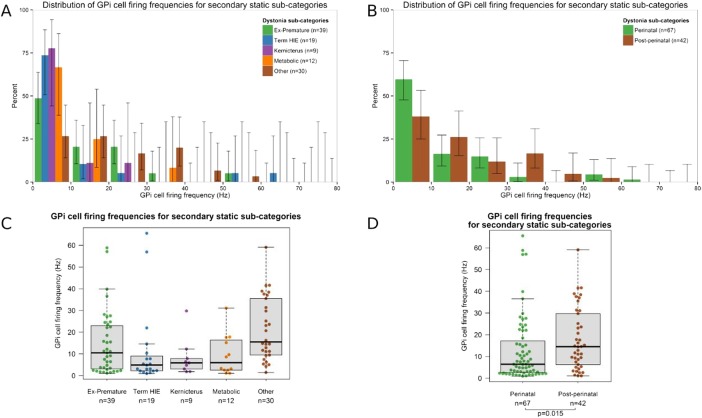Figure 3.
Distribution of GPi cell firing frequencies for the secondary static dystonia subgroups. (A and B) Histograms show the percentage of GPi cells within each 10 Hz frequency bin for each of the five aetiological subgroups (A) as well as for the perinatal onset and postperinatal onset groups (B). Lines show the 95% Agresti-Coull add-4 CIs. (C and D) Box-and-whisker plot of GPi cell firing frequencies for each of the five aetiological subgroups (C) as well as for the perinatal onset and postperinatal onset groups (D). Circles show the firing frequency of individual cells. Horizontal lines within boxes show the group median, boxes show the IQR, and whiskers show the full range. GPi, globus pallidus interna.

